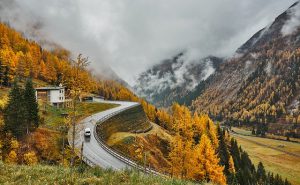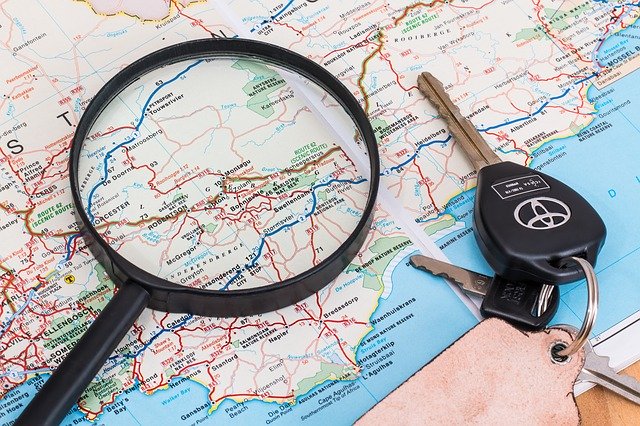Summer, winter, spring or autumn: in the holiday periods many Dutch people like to go out by car. The car is and remains the most popular means of transport; just over half choose a car holiday. To make your trip to the holiday destination as carefree as possible, there are a number of things you can take into account. Do this especially, because a good preparation can save you a lot of stress. That’s why we give car holiday tips about the car check, packing, maximum load weight, fuel consumption, obligatory tools for in the car, tolls, breakdown assistance, car insurance and more important points. All this so that you are as prepared as possible for your car holiday.
Car check before departure
With the extra weight of luggage, the steep mountain slopes and the long distances, the chance of a car malfunction during your holiday is just a little bigger than during routine trips on Dutch roads. It is therefore wise to have the car checked at the garage before departure. Almost every car dealer checks for a few tens whether the brake discs, air conditioning and windscreen wipers will last one more holiday (and hopefully longer). Do the check well before departure, so that there is enough time for a possible repair to your car.
You don’t have to have everything checked by a specialist, there are also some things you can do yourself. This will save you maintenance costs. Such as checking the tyre pressure and the tread depth of the tyres. And you can also check the fluids, such as coolant, brake and windscreen washer fluid yourself. This way you know if you need to refill them and if you need to take spare fluid with you. And… do you actually have a spare wheel in the trunk? Good to take a look at that.
Fitting out the car
Before you start packing, make a packing list for the car holiday. Once you’re packed? Then the layout of the trunk – and the rest of the car – can begin. How do you do this as practically as possible? Heavy suitcases and bags are best placed at the bottom of the trunk. If not everything fits and luggage comes out above the backrest of the rear seat, make sure you have a luggage net or rack and secure the luggage securely. This will prevent bags, suitcases or loose items from flying through the car in the event of an accident or sudden stop. This can be quite dangerous.
Maximum load weight
If you are not, or to a lesser extent, limited by a luggage limit, you are quickly tempted to take more with you than necessary. But even if you have the space, it is good to think about the amount of stuff you take with you. After all, excess baggage leads to higher petrol consumption and sometimes even to unsafe traffic situations. Especially when the maximum load weight of the car is exceeded. Handy; the maximum load weight can be found on your license plate. Leave unnecessary items at home when you go on a car holiday. Also pay a little attention to your driving style, as this will influence your fuel consumption.
Check tyre pressure
After loading the car, check the tyre pressure: for better road holding and fuel economy, it should be increased when the car is heavily loaded. The weaker the tyres, the more fuel is used during the journey. But also make sure the pressure isn’t too high, because that can cause a burst tyre and less grip on the road. And that is dangerous. The right tyre pressure differs per car. There is (probably) a sticker in the doorpost, sun visor or fuel flap that shows the correct tire pressure for your car.
Winter or summer tyres?
By the way, keep in mind what kind of tires you are leaving for the holiday destination. Most Dutch cars drive on summer tyres all year round. Even in winter. Driving with winter tyres is therefore not compulsory in our country. This is different abroad: in the colder periods of the year in some European countries it is mandatory to drive with winter tires. In winter conditions the braking distance with winter tyres is shorter, the grip on the road is also better. In some areas and under certain weather conditions, snow chains are also compulsory abroad.
Vignette and environmental sticker
In many countries in Europe, tolls are levied or a vignette is required. Nowadays, in more and more places, tolls can be paid by credit card instead of cash only. Do you only have cash? Then there is a chance that you will end up in a much longer queue. There is an electronic toll badge for sale for French toll gates, with which you can easily pay in separate (and often faster) queues. To drive through Austria and Switzerland, you will need a vignette. You can also often buy this at motorway border crossings. If you want to arrange such a vignette in advance, you can order it online.
In view of the environment and emissions, there are nowadays (parts of) countries in which your car has to comply with certain environmental conditions. To indicate that your car meets the environmental requirements, you need to apply for an environmental sticker. If the car does not meet the requirements, you are not allowed to go through such an area and you have to take a different route. And does your car meet the requirements, but you don’t have a sticker? Even then you are not allowed to enter the area. Sin of the detour time. If you order an environmental sticker, you often have to wait five working days for it. So don’t wait until the last moment to check and apply.
Rules, fines and obligations
In other countries sometimes different traffic rules apply than we know in the Netherlands. Did you know, for example, that as a driver wearing glasses in Spain, you must always carry a spare pair of glasses with you? And the amounts for fines are sometimes much higher than in the Netherlands. In Norway, in the extreme case, you pay € 1012.89 (NOK 10,200) if you hit the accelerator too hard, resulting in a criminal case and driving disqualification. And if you drive around in Italy with winter tyres during the summer period, you risk a fine of a minimum of € 419 and a maximum of € 1,682. In order to avoid unnecessary fines or awkward situations, it is advisable to briefly read about the biggest differences in foreign traffic before departure.
Driving in the mountains
As soon as you cross the Dutch border, the landscape quickly changes. Hills adapt to your driving style. In the Netherlands, 80 kilometres per hour is the best way to drive in fifth gear, but in a hilly landscape that’s no good. In the mountains you have to do some touring. If you put the throttle down, the car should still be able to accelerate. If you can’t, shift down. Otherwise the engine will be overloaded and may overheat – especially if the car is against, on or over the maximum load weight. For downhill driving a low gear is the best choice. If you take your foot off the throttle, the car has to slow down on its own. Continuous braking is not necessary, which prevents damage to the brake system.


